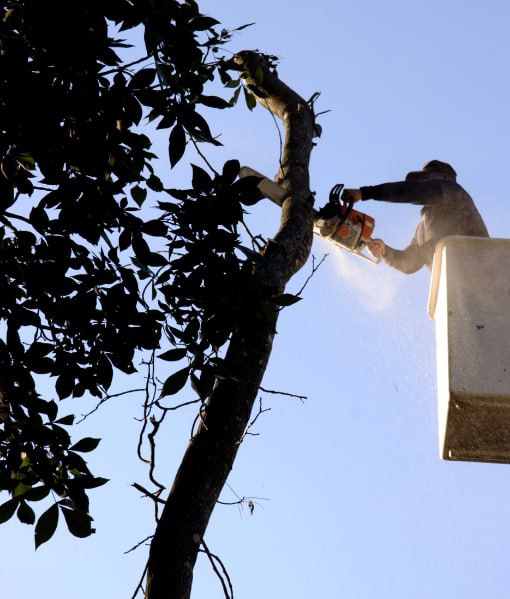Introduction
Trees add beauty, shade, and environmental benefits to any property, but when a tree becomes structurally unsound, it can pose serious risks. A weakened or unstable tree can collapse unexpectedly, causing damage to property, injury, or even loss of life. Identifying the signs of a failing tree early can prevent these hazards and ensure the safety of your outdoor space.
At Eastbourne Tree Care, we provide expert tree assessments and removal services in Eastbourne, East Sussex. This article outlines how to recognise a structurally unsound tree and when professional removal is necessary.
Key Takeaways
- Structural instability in trees can result from disease, storm damage, or root issues.
- Warning signs include dead branches, leaning trunks, cracks, and fungal growth.
- Trees near buildings, power lines, or high-traffic areas pose a higher risk.
- Regular tree inspections help prevent accidents and property damage.
- Professional tree removal ensures safety and long-term landscape health.
Common Signs of a Structurally Unsound Tree
1. Large Cracks or Splits in the Trunk
Deep cracks or splits in the trunk can indicate internal decay and structural weakness. These fractures make the tree more susceptible to breaking, especially during high winds or storms. If cracks extend across a large portion of the trunk, removal may be necessary to prevent collapse.
2. Significant Leaning or Sudden Movement
A tree that leans naturally is not always a problem, but a tree that has recently started leaning more than usual could be at risk of falling. This could be due to:
- Weak or damaged roots.
- Soil erosion or shifting ground.
- Storm or wind damage.
If the tree leans at a sharp angle or shows signs of movement in the soil, professional assessment is recommended.
3. Dead or Falling Branches
Dead or decaying branches are a major safety concern, especially if they hang over driveways, footpaths, or buildings. Large falling branches can cause significant damage or injury. If more than half of a tree’s branches appear dead, the tree’s overall health is likely compromised, making removal the best option.
4. Hollow or Decaying Trunk
A hollow trunk suggests that the tree’s internal structure is deteriorating. While some trees can survive with minor hollowing, extensive internal decay reduces their strength. Signs of internal decay include:
- Soft or crumbly wood.
- Fungal growth at the base of the trunk.
- Visible cavities or holes.
A professional tree surgeon can assess the severity and determine if removal is required.
5. Fungal Growth and Root Rot
Fungal growth at the base of a tree, such as mushrooms or bracket fungi, often indicates root rot. Since roots are responsible for anchoring the tree, decay in this area can make the tree unstable. Other signs of root damage include:
- Exposed or broken roots.
- Soil heaving or lifted ground around the base.
- Yellowing or thinning leaves, even in the growing season.
If root damage is extensive, the tree may become unstable and require removal.
6. Pest Infestation
A high presence of wood-boring insects, such as beetles or termites, can weaken the tree from within. Visible holes, sawdust-like residue near the base, or peeling bark are common indicators of an infestation. If pests have compromised the tree’s structure, removal may be the safest solution.
When Should a Tree Be Removed?
1. If It Poses a Risk to People or Property
If a tree is close to homes, roads, power lines, or public spaces, its structural condition should be carefully monitored. A weakened tree in these locations poses a greater risk of damage or injury, making early removal essential.
2. If More Than 50% of the Tree Is Damaged
A tree with extensive decay, disease, or deadwood is unlikely to recover. When more than half of a tree’s structure is compromised, removal is often the safest and most cost-effective solution.
3. If It Is Preventing New Growth or Development
Sometimes, an unstable or diseased tree can affect the health of nearby plants and trees. Removing it may allow surrounding vegetation to thrive. It may also be necessary to remove trees for landscaping, construction, or garden renovations.
The Importance of Professional Tree Removal
Removing a tree, especially a large or unstable one, is a dangerous task that requires expert handling. At Eastbourne Tree Care, we provide safe and efficient tree removal services in Eastbourne, East Sussex, ensuring minimal disruption to your property. Our team uses professional techniques to remove hazardous trees without damaging nearby structures or landscapes.
Conclusion
A structurally unsound tree can pose a significant risk to property and safety. By identifying warning signs such as cracks, leaning, deadwood, and root decay, homeowners can take proactive steps to prevent potential damage. If you suspect a tree on your property is unstable, seeking professional advice is essential.
For expert tree assessments and removal in Eastbourne, East Sussex, Eastbourne Tree Care provides reliable and professional services. Contact us today for a consultation and ensure the safety of your outdoor space.
Call us on: 01323 921097
Click here to find out more about Eastbourne Tree Care
Click here to complete our contact form and see how we can help with your tree’s needs.
